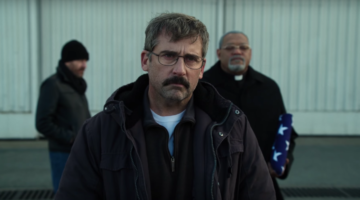Review: Timbuktu
Perhaps a first introduction to the film Timbuktu, directed by Abderrahmane Sissakowas with a screenplay from Sissakowas and Kessen Tall was at the 2015 Oscar Nominations.
Timbuktu was one of two films, along with the also less-known Tangerines, which toppled heavy-hitter and expected Oscar lock Force Majeure.
Though Ruben Östlund’s movie was artful, a very curious omission, Sissakowas’s film, which first screened at Cannes, and also played as part of TIFF, stands up as a welcome contender for Best Foreign Film.
The film is the pioneer nominee from the country of Mali, and it is clear that the nomination does not exist for the sole reason of trailblazing. Timbuktu is a sublime masterpiece, and clearly stands on its own merit and innovation.
In many ways, Timbuktu plays well as a companion to Leviathan, also a contender for Best Foreign Film, and also currently playing at the TIFF Bell Lightbox. Both films are impressively shot. In Timbuktu, the strokes of cinematographer Sofian El Fani, who also shot the lush Blue is the Warmest Colour capture the sense of languid heat entrancingly. There is habitually a “we are there” feeling with the oppressive sunshine casting a warning light on the activity going on below. The film is saturated with light and sound, and really plays well on a cold winter night.
But Timbuktu is no happy travelogue, as Sissakowas presents a story of a simple cow herder (Ibrahim Ahmed dit Pino) and his wife Satima and daughter Toya (Toulou Kiki Layla and Walet Mohamed). The family lives just outside of the city of Timbuktu, in the desert, though Sissakowas often presents the story of what is happening in the city, often showing the action of rebels, Jihadists, imams, children, even animals, in an often elliptical story, loosely based upon real events that occurred in 2012.
Perhaps the best way to appreciate and understand Timbuktu is allowing the events to occur, and afterwards making headway to try to undertstand Sissako’s intentions. In particular, an opening scene of a gazelle being shot and killed seems like a fact of life in the beginning, but receives a far different and more dangerous at the very end of Timbuktu. Some other scenes contain a wealth of deep beauty in and of themselves as gentle acts of rebellion, as women and girls singing is a punishable offense. While the tunes may unknown, the spirit is hauntingly familiar.
A few sequences in the film are extremely difficult to experience, but for achingly dissimilar reasons: as soccer is banned in the city, there is an entire passage of boys playing soccer sans having an actual ball with which to play, and the plays are still expertly choreographed, (and when the Jihadists come by, the boys go into repose, stretching, despite wearing football jerseys). Another difficult sequence finds a man and woman buried up to their necks and stoned, which is shocking and very difficult to view.
The work is on par with Leviathan, as it is quite incendiary. But unlike Zvyagintsev’s work, it is startlingly understated at the same time. This is the power of a film that can inflame without making obvious images within the smoke.
[star v=35]






